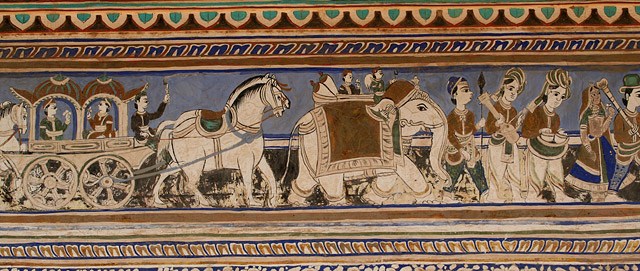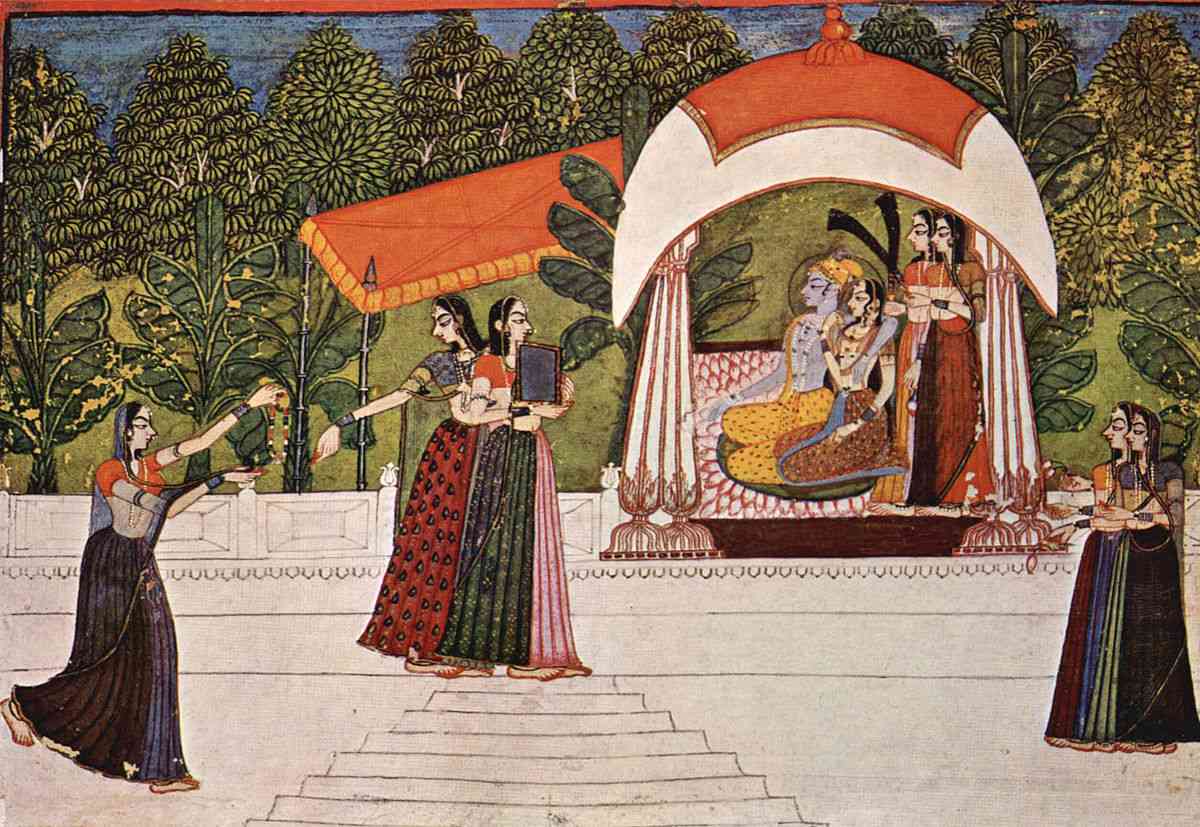Fresco Wall Paintings :
The princely state of Rajasthan has a long history of Rajputs, acquiring land, winning and fighting battles, sprawling palaces, and rich mansions. An onlooker has often described the state as a dream carved out of marble. The arid topography of the desert contrasts sharply with the colorful life predominating here. Every Rajasthan region specializes in one thing or another. Shekhawati's fresco wall paintings are unique in themselves, though it was the Mughal kings who made wall paintings fashionable, their religious accusations forbade them to have man or animal as a motif; only floral and abstract designs were permitted. That posed as an obstacle to an extent. Wall painting in Shekhawati only boomed after the decline of Mughal power. The artists reliant heavily on traditional Indian subjects for the early corpus. This consisted of mythological scenes, particularly of Lord Krishna, local legends, animals and plants, men and women's daily lives, towns, and the Shekhawat Rajas. Most towns are good enough to see classic wall paintings of frescoes, few are Mandawa, Ramgarh, Fatehpur. Fresco Wall Paintings Rajasthan
The stories -
Through backbreaking effort the havelis earned their splendour. Wall painting was an elaborate process that involved various materials, layers and techniques. Scenes depicted cover 10 broad themes — decorative designs, everyday life, religion, raga mala, folk mythology, historical events or personalities, flora and fauna, erotica, maps or places and the British and their contraptions. Most chhatris or domes in the ceiling include a rasamandala — a dancing circle in which Krishna miraculously replicates himself so that every Gopi finds him dancing next to her.
The colours -
Before the 19th century, artists used natural colours such as lampblack, and red, green and yellow ochres. Lime was a substitute for white and was used for lightening other hues, while indigo, ultramarine, vermilion, verdigris, gold and silver were reserved for prayer rooms and bedrooms. The Indian Yellow, made from gomutra or urine collected from cows fed on mango leaves, was used, albeit rarely. In 1860, German chemical pigments such as ultramarine, chrome red and emerald green reached India and remained popular till World War I, until supplies were hit. (Inspired by ‘Made in Germany’ paint tins, many painters randomly emblazoned the word ‘Germany’ to depict anything English!) Maroon was popular from 1820 to 1865, red and blue held sway between 1860 and 1910, and multi-coloured paintings using cheap European paints dominated the years from 1900 to 1950.However, the best way to ensure a hassle free and great tour is to get it from a tour operator which has a high level of expertise and experience in this sector. We are a leading tour operator company. Visit our website and book customize tour packages as per your demand. We never compromise in our service.
Here are some our Best tour packages for Shekhawati Rajasthan Choose them any and explore the rich culture of Rajasthan with us.
Shekhawati Tour Packages
Rajasthan Luxury Tour Packages
Rajasthan Budget Tour Packages
Rajasthan Car Rental













0 comments:
Post a Comment